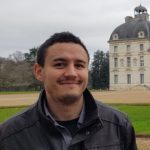Link to Pubmed [PMID] – 29194468
J Crohns Colitis 2017 Nov;
Background: Crohn’s disease [CD] is known to be associated with gut microbial dysbiosis. Infliximab [IFX] is increasingly used to treat pediatric CD, however it is not clear how gut microbiota is modified during IFX treatment. The aim of this study was to characterize the fecal microbiota community composition in pediatric CD patients and to assess its dynamic changes during IFX therapy.
Methods: 16S rRNA sequencing approach was applied to determine the compositions of microbial communities in fecal samples. The composition and function of the fecal microbiota were compared between CD patients and health controls.
Results: Characteristics of fecal microbiome composition in pediatric CD patients prior to IFX treatment were represented by a lower biodiversity, a gain in Enterococcus, and a significant loss in multiple short-chain fatty acid [SCFA]-producing bacteria, including Anaerostipes, Blautia, Coprococcus, Faecalibacterium, Lachnospira, Odoribacter, Roseburia, Ruminococcus, and Sutterella. Additionally, alterations were observed in metabolic functions of the gut microbial community in CD. IFX treatment increased the biodiversity of gut microbiota and shifted its composition as well as its functional capabilities in the pediatric CD patients toward a healthy status. However, multiple SCFA-producing taxa were not significantly expanded. The sustained response of pediatric CD patients to IFX was associated with abundance of SCFA-producing bacteria.
Conclusions: A lower biodiversity with alterations in the composition and function of fecal microbial community, characterizing gut microbial dysbiosis, were observed in the Chinese pediatric CD patients. IFX diminished the CD-associated gut microbial dysbiosis but was deficient in increasing certain SCFA-producing taxa.

